Premium Only Content
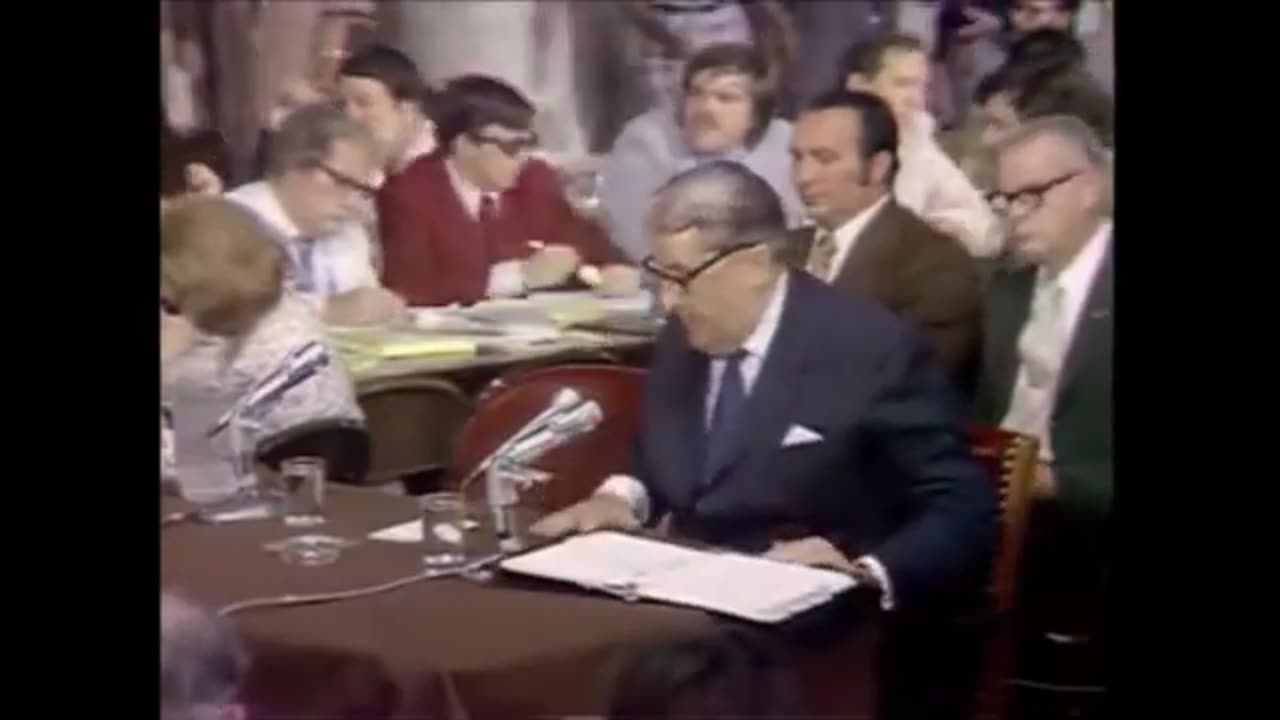
Watergate Hearings Day 35: Vernon A. Walters and L. Patrick Gray (1973-08-03)
The dark side of history: https://thememoryhole.substack.com/
Vernon Anthony Walters (January 3, 1917[1] – February 10, 2002) was a United States Army officer and a diplomat. Most notably, he served from 1972 to 1976 as Deputy Director of Central Intelligence, from 1985 to 1989 as the United States Ambassador to the United Nations and from 1989 to 1991 as Ambassador to the Federal Republic of Germany during the decisive phase of German Reunification. Walters rose to the rank of lieutenant general in the U.S. Army and is a member of the Military Intelligence Hall of Fame.
Background
Walters was born in New York City, his father being a British immigrant and insurance salesman. From age 6 he lived in Britain and France with his family. His formal education beyond elementary school consisted only of boarding school instruction at Stonyhurst College, a Jesuit school in Lancashire, England, and he did not attend university. At the age of sixteen he left school and returned to the United States to work for his father as an insurance claims adjuster and investigator.
In later years he seemed to enjoy reflecting on the fact that he had risen high and accomplished much despite an almost total lack of formal education.
He was fluent in French, Italian, Spanish, and Portuguese as well as his native English. He also spoke German fluently, but, as he joked, inaccurately, and knew the basics of several other languages. His simultaneous translation of a speech by United States President Richard Nixon in France prompted French President Charles de Gaulle to say to Nixon, "You gave a magnificent speech, but your interpreter was eloquent."[2]
Military career
1940s and 50s
Walters in 1976 as Lieutenant General
Walters joined the Army in 1941 and was one of the over 12,000 Ritchie Boys serving at Camp Ritchie. Soon after he was commissioned. He served in Africa and Italy during World War II. He served as a link between the commands of Brazilian Expeditionary Force and U.S. Fifth Army, earning medals for distinguished military and intelligence achievements.[3]
He served as an aide and interpreter for several Presidents. He was at President Harry S. Truman's side as an interpreter in key meetings with America's Spanish- and Portuguese-speaking Latin American allies. His language skills helped him win Truman's confidence, and he accompanied the President to the Pacific in the early 1950s, serving as a key aide in Truman's unsuccessful effort to reach a reconciliation with an insubordinate General Douglas MacArthur, the Commander of United Nations forces in Korea.
In Europe in the 1950s, Walters served President Dwight Eisenhower and other top US officials as a translator and aide at a series of NATO summit conferences. During this period he participated in the famous visit of Eisenhower to General Franco. He also worked in Paris at Marshall Plan headquarters and helped set up the Supreme Headquarters Allied Powers in Europe. He was with Vice President Richard Nixon in 1958 when an anti-American crowd stoned their car in Caracas, Venezuela. Walters suffered facial cuts from flying glass. The Vice President escaped injury.
1960s
In the 1960s, Walters served as a U.S. military attaché in France, Italy, and Brazil. In 1961, he proposed an American military intervention in Italy if the Socialist Party had participated in the Government.[4]
While serving as a military attaché in Paris from 1967 to 1972, Walters played a role in secret peace talks with North Vietnam. He arranged to smuggle National Security Advisor Henry Kissinger into France for secret meetings with a senior North Vietnamese official, and then smuggle him out again. He accomplished this by borrowing a private airplane from an old friend, French President Georges Pompidou. He had previously been chosen by Richard Nixon to be their translator/interpreter during Pompidou's 1970 trip to the United States.
1970s
Walters in 1972 as Deputy Director for Central Intelligence
Nixon had favored Walters since together surviving the 1958 Caracas attack.[5] As president, Nixon appointed Walters as Deputy Director for Central Intelligence (DDCI) in 1972. (Following the abbreviated incumbency of James R. Schlesinger, Walters also served as Acting DCI for two months in the summer of 1973.) During his four years as DDCI he worked closely with four successive Directors as the Agency and the nation confronted such major international developments as the 1973 Arab-Israeli war, the subsequent oil crisis, the turbulent end of the Vietnam War, the Chilean military coup against the Allende government and the Letelier assassination. According to a close colleague, Walters also averted "a looming catastrophe" for the CIA in connection with the Watergate scandal:
Despite numerous importunings from on high, [Walters] flatly refused to ... cast a cloak of national security over the guilty parties. At the critical moment he ... refused to involve the Agency and bluntly informed the highest levels of the executive [branch] that further insistence from that quarter would result in his immediate resignation.
Walters himself reflected on those challenging days in his 1978 autobiography Silent Missions:
I told [President Nixon's White House counsel] that on the day I went to work at the CIA I had hung on the wall of my office a color photograph showing the view through the window of my home in Florida. When people asked me what it was, I told them [this] was what was waiting [for me] if anyone squeezed me too hard.
Diplomatic career
Walters in the Reagan Cabinet 1989 as U.S. Ambassador to the United Nations, back row, third from right
Walters as ambassador to Germany with Wolfgang Schäuble, 1991
During the presidency of Jimmy Carter, Walters worked as a business consultant. The election of Ronald Reagan ended Walter's first retirement from public life. He served as ambassador-at-large, visiting 108 countries.[5] Reagan used prominent Catholics in his government such as Walters to brief the pope during the Cold War.[6] Walters was then United States Ambassador to the United Nations from 1985 to 1989 and ambassador to the Federal Republic of Germany from 1989 to 1991,[7] being responsible on behalf of the United States for the preparations of the Treaty on the Final Settlement with Respect to Germany. In 1986, he received the Golden Plate Award of the American Academy of Achievement.[8] In 1987 he visited Fiji, two weeks after Timoci Bavadra came to office. Bavadra wanted to create a nuclear-free zone in Fiji. William Bodde Jr. had said previously about this: "a nuclear free zone would be unacceptable to the US given our strategic needs (...) the US must do everything possible to counter this movement".[9] Walters spoke with Bavadra and Sitiveni Rabuka. Two weeks later Bavadra was overthrown by Rabuka.[10]
Retirement and death
The Washington Post wrote in 1985 that despite being unknown to the public, "no one has been closer to this country's foreign affairs since World War II". CIA director Richard Helms said "I can't think of anyone who has had a more extraordinary career. Who's been to all the places that Dick Walters has been to?" Walters said "I think I tell a lot" in his autobiography, but believe me, I couldn't tell the half of it".[5]
During the 1990s, after he had again retired from public life, Walters worked as a business consultant and was active on the lecture circuit. On November 18, 1991, he was presented with the Presidential Medal of Freedom by President George H. W. Bush. He wrote another book, The Mighty and the Meek[11] (published in 2001), which profiled famous people with whom he had worked during his life.
Walters was a bachelor, stating that he "married the U.S. government a long time ago".[5] Upon his death in 2002 he was buried in Arlington National Cemetery.[12]
In popular culture
Walters was portrayed by Garrick Hagon in the 2002 BBC production of Ian Curteis's controversial The Falklands Play.
Works
Articles
"1988: A Year of Success at the UN." Harvard International Review, vol. 11, no. 3 (1989), pp. 136–39. JSTOR 43648954.
"El Acuerdo Sobre Las Bases Entre España y Estados Unidos Cuarenta Años Después." Política Exterior, vol. 7, no. 36 (1993), pp. 158-67. JSTOR 20643388.
Books
Silent Missions. New York: Doubleday (1978). ISBN 0385135009.
The Mighty and the Meek: Dispatches from the Front Line of Diplomacy. London: St. Ermine's Press (2001). ISBN 1903608031.
Contributions
Foreword to Jungle Warriors: Defenders of the Amazon, with text and photographs by Carlos Lorch. Action Editora (1992). ISBN 978-0943231488.
Documentaries
Operation Condor. London: SW Pictures (2011). via Alexander Street Press.
See also
1964 Brazilian coup d'état
References
Nolan, Cathal J. (1997). Notable U.S. Ambassadors Since 1775: A Biographical Dictionary. Greenwood Publishing Group. ISBN 978-0313291951 – via Google Books.
Henry R. Appelbaum: Vernon Walters – Renaissance Man In Memoriam, Central Intelligence Agency, April 14, 2007
"The importance of foreign language studies [sound recording] / [lecture by] Vernon A. Walters :: West Point Distinguished Lecture Series". digital-library.usma.edu.
Guido Crainz, Autobiografia di una Repubblica. Le radici dell'Italia attuale (Donzelli, 2009), p. 54
"Vernon Walters, Back in His World". The Washington Post. December 16, 1985. Archived from the original on April 4, 2017. Retrieved March 15, 2017.
Bono, Agostino (November 17, 2004), Officials say pope, Reagan shared Cold War data, but lacked alliance, Catholic News Service, archived from the original on January 18, 2013
Kelley, Tina (February 15, 2002), "Vernon Walters, Ex-Envoy And Deputy C.I.A. Chief, 85", The New York Times
"Golden Plate Awardees of the American Academy of Achievement". www.achievement.org. American Academy of Achievement.
Speech by William Bodde Jr. at the Pacific Islands Luncheon, Kahala Hilton Hotel, Hawaii, February 10, 1982, cited in the 1989 paper by Owen Wilkes, editor of Peacelink and Wellington Pacific Report
Blum, William (2002). Rogue State. Monroe: Common Courage Press. pp. 153–154. ISBN 184277221X.
The Mighty and the Meek on Amazon
Burial Detail: Walters, Vernon A – ANC Explorer
A tribute by Henry R. Appelbaum (This work is in the public domain)
Book: Silent Missions. Autobiography, Publisher, Doubleday 1978; ISBN 978-0385135009
George Bush Presidential Library and Museum
Further reading
de Oliveira, Frank Márcio. Attaché Extraordinaire: Vernon A. Walters and Brazil. Washington, D.C.: National Defense Intelligence College (Mar. 2006)
External links
Media related to Vernon A. Walters at Wikimedia Commons
Finding aid for the Vernon A. Walters Oral History at the Dwight D. Eisenhower Presidential Library
Alan Goodman discuses the role of the United States at the UN and the UN's contributions to American foreign policy with Vernon Walters, on American Interests (1987)
New York Times obituary
Interview on Central American Crisis of 1984 at the Dean Peter Krogh Foreign Affairs Digital Archives
Full testimony (video) before the Senate Watergate Committee via YouTube
Appearances on C-SPAN
Vernon Walters at IMDb
Government offices
Preceded by
Robert E. Cushman Jr.
Deputy Director of Central Intelligence
1972–1976 Succeeded by
E. Henry Knoche
Preceded by
James R. Schlesinger
Acting Director of Central Intelligence
1973 Succeeded by
William Colby
Diplomatic posts
Preceded by
Jeane Kirkpatrick
United States Ambassador to the United Nations
1985–1989 Succeeded by
Thomas R. Pickering
Preceded by
Richard Burt
United States Ambassador to West Germany
1989–1990 Succeeded by
Himself
as United States Ambassador to Germany
Preceded by
Richard Barkley
as United States Ambassador to East Germany United States Ambassador to Germany
1990–1991 Succeeded by
Robert M. Kimmitt
Preceded by
Himself
as United States Ambassador to West Germany
vte
United States Ambassadors to Germany Germany
Germany–United States relationsEmbassy of the United States, Berlin
Minister Plenipotentiary
Adams
Seal of the US Department of State
Envoy Extraordinary
and Minister Plenipotentiary
Wheaton Donelson Hannegan Barnard Vroom Wright Judd Wright Bancroft Davis Taylor White Sargent Kasson Pendleton Phelps Runyon
Ambassador Extraordinary
and Plenipotentiary
Runyon Uhl White Tower Hill Leishman Gerard Dresel Houghton Schurman Sackett Dodd Wilson Kirk Morris Conant Bruce Dowling McGhee Lodge Rush Hillenbrand Stoessel Burns Burt Walters Kimmitt Holbrooke Redman Bindenagel Kornblum Coats Timken Koenig Murphy Emerson Logsdon Grenell Quinville Gutmann
vte
United States Ambassadors to the United Nations
Stettinius Johnson Austin Lodge Wadsworth Stevenson Goldberg Ball Wiggins Yost Bush Scali Moynihan Scranton Young McHenry Kirkpatrick Walters Pickering Perkins Albright Richardson Burleigh Holbrooke Cunningham Negroponte Danforth Patterson Bolton Wolff Khalilzad Rice DiCarlo Power Sison Haley Cohen Craft Mills Thomas-Greenfield
Italics indicates acting
vte
Deputy Directors of Central Intelligence and the Central Intelligence Agency
Central Intelligence
Kingman Douglass Edwin Kennedy Wright William Harding Jackson Allen Dulles Charles P. Cabell Marshall Carter Richard Helms Rufus Taylor Robert E. Cushman Jr. Vernon A. Walters E. Henry Knoche John F. Blake Frank Carlucci Bobby Ray Inman John N. McMahon Robert Gates Richard James Kerr Bill Studeman George Tenet John A. Gordon John E. McLaughlin
Central Intelligence Agency
Albert Calland Stephen Kappes Michael Morell Avril Haines David S. Cohen Gina Haspel Vaughn Bishop David S. Cohen
vte
Cabinet of President Ronald Reagan (1981–1989)
Cabinet
Vice President
George H. W. Bush (1981–1989)
Secretary of State
Alexander Haig (1981–1982) George Shultz (1982–1989)
Secretary of the Treasury
Donald Regan (1981–1985) James Baker (1985–1988) Nicholas F. Brady (1988–1989)
Secretary of Defense
Caspar Weinberger (1981–1987) Frank Carlucci (1987–1989)
Attorney General
William French Smith (1981–1985) Edwin Meese (1985–1988) Dick Thornburgh (1988–1989)
Secretary of the Interior
James G. Watt (1981–1983) William P. Clark Jr. (1983–1985) Donald P. Hodel (1985–1989)
Secretary of Agriculture
John R. Block (1981–1986) Richard Lyng (1986–1989)
Secretary of Commerce
Malcolm Baldrige Jr. (1981–1987) William Verity Jr. (1987–1989)
Secretary of Labor
Raymond J. Donovan (1981–1985) Bill Brock (1985–1987) Ann Dore McLaughlin (1987–1989)
Secretary of Health and Human Services
Richard Schweiker (1981–1983) Margaret Heckler (1983–1985) Otis Bowen (1985–1989)
Secretary of Housing and Urban Development
Samuel Pierce (1981–1989)
Secretary of Transportation
Drew Lewis (1981–1983) Elizabeth Dole (1983–1987) James H. Burnley IV (1987–1989)
Secretary of Energy
James B. Edwards (1981–1983) Donald P. Hodel (1983–1985) John S. Herrington (1985–1989)
Secretary of Education
Terrel Bell (1981–1984) William Bennett (1985–1988) Lauro Cavazos (1988–1989)
Cabinet-level
Director of the Office of Management and Budget
David Stockman (1981–1985) James C. Miller III (1985–1988) Joe Wright (1988–1989)
Director of Central Intelligence
William J. Casey (1981–1987) William H. Webster (1987–1989)
Trade Representative
Bill Brock (1981–1985) Clayton Yeutter (1985–1989)
Ambassador to the United Nations
Jeane Kirkpatrick (1981–1985) Vernon A. Walters (1985–1989)
Counselor to the President
Edwin Meese (1981–1985) None (1985–1989)
Authority control databases Edit this at Wikidata
International
FAST ISNI VIAF
National
Spain France BnF data Catalonia Germany Israel United States Netherlands Poland
Artists
MusicBrainz
People
Deutsche Biographie
Other
NARA SNAC IdRef
Categories:
1917 births2002 deaths20th-century American politicians20th-century translatorsAmbassadors of the United States to GermanyAmerican people of British descentBurials at Arlington National CemeteryCommanders Crosses of the Order of Merit of the Federal Republic of GermanyDeputy Directors of the Central Intelligence AgencyInterpretersPeople educated at Stonyhurst CollegePeople of the Defense Intelligence AgencyMember of the Academy of the Kingdom of MoroccoPermanent Representatives of the United States to the United NationsPresidential Medal of Freedom recipientsReagan administration cabinet membersUnited States Army generalsUnited States military attachésAmerican Roman CatholicsRitchie Boys20th-century American diplomatsAmerican expatriates in the United KingdomAmerican expatriates in France
Louis Patrick Gray III (July 18, 1916 – July 6, 2005) was acting director of the Federal Bureau of Investigation (FBI) from May 3, 1972, to April 27, 1973. During this time, the FBI was in charge of the initial investigation into the burglaries that sparked the Watergate scandal, which eventually led to the resignation of President Nixon. Gray was nominated as permanent Director by Nixon on February 15, 1973, but failed to win Senate confirmation.[3] He resigned as Acting FBI director on April 27, 1973, after he admitted to destroying documents that had come from convicted Watergate conspirator E. Howard Hunt's safe—documents received on June 28, 1972, 11 days after the Watergate burglary, and given to Gray by White House counsel John Dean.[4]
Gray remained publicly silent about the Watergate scandal for 32 years, speaking to the press only once, near the end of his life; this was shortly after Gray's direct subordinate at the FBI, FBI Deputy Director Mark Felt, revealed himself to have been the secret source to The Washington Post known as "Deep Throat".
Early life and education
Gray was born on July 18, 1916, in St. Louis, Missouri, the eldest son of Louis Patrick Gray Jr., a Texas railroad worker. He worked three jobs while attending schools in St. Louis and Houston, Texas, graduating from St. Thomas High School in 1932, at the age of 16 (having skipped two grades). Gray initially attended Rice University; however, his true goal was to be admitted to the United States Naval Academy. He was finally admitted to the Naval Academy in 1936 and he immediately dropped out of Rice University in his senior year so he could attend.
At the time, however, Gray could not afford the bus or train fare to Annapolis, so he hired on as an apprentice seaman on a tramp steamer out of Galveston. During the journey to Philadelphia (the closest the steamer could get him to Maryland), Gray taught calculus to the ship's captain, a Bulgarian named Frank Solis, in return for basic lessons in navigation. Once in Philadelphia, Gray hitchhiked to Annapolis.[5]
Once at the academy, Gray walked onto the football team as the starting quarterback, played varsity lacrosse and boxed as a light heavyweight. In 1940, Gray received a Bachelor of Science degree from the Naval Academy.
Naval career
The United States Navy commissioned Gray as a line officer, and he served through five submarine war patrols in the Pacific Ocean theater of World War II. He suffered a ruptured appendix at the start of his sixth patrol and was unable to get to a hospital for 17 days, an ordeal that should have killed him.[6] In 1945, Gray visited Beatrice Castle Kirk (1923–2019), the widow of his Naval Academy classmate, Lieutenant Commander Edward Emmet DeGarmo (1917–1945). They were married in 1946. He adopted her two sons, Alan and Ed; and they had two of their own, Patrick and Stephen.[6]
In 1949, Gray received a Juris Doctor degree from George Washington University Law School, where he edited the law review and became a member of the Order of the Coif. He was admitted to practice before the Washington, D.C., Bar in 1949; later, he was admitted to practice law by the Connecticut State Bar, the United States Court of Appeals for the Armed Forces, the United States courts of appeals, the United States Court of Claims, and the Supreme Court of the United States.[7]
By 1960, Gray's achievements in the Navy included commanding the U.S.S. Tiru (SS-416) and two other submarines on war patrols during the Korean War; earning the rank of captain two years before he was legally allowed to be paid for it; and serving as congressional liaison officer for the United States Secretary of Defense, the Chairman of the Joint Chiefs of Staff, and the Chief of Naval Operations. He indicated his desire to retire from the Navy, but Chief of Naval Operations Arleigh Burke told him, "If you stay, you'll have my job some day."[6] He did not stay, but joined a Connecticut law firm in 1961.
Department of Justice
In 1969, Gray returned to the federal government and worked under the Nixon administration in several different positions. In 1970, President Nixon appointed him as Assistant Attorney General for the Civil Division in the Department of Justice. In 1972, Gray was nominated to be Deputy Attorney General, but before he could be confirmed by the full United States Senate his nomination was withdrawn.
Acting Director of FBI
Instead, President Nixon designated him as Acting Director of the FBI after the death of J. Edgar Hoover. Gray served for less than a year. Day-to-day operational command of the Bureau remained with Associate Director Mark Felt.
Watergate involvement
Watergate scandal
The Watergate complex in 2006
Events
List
People
Watergate burglars
Groups
CRP
White House
Judiciary
Journalists
Intelligence community
Mark Felt ("Deep Throat") L. Patrick Gray Richard Helms James R. Schlesinger
Congress
Related
vte
Watergate and the FBI's investigation
On June 17, 1972, just six weeks after Gray took office at the FBI, five men were arrested after breaking into the Democratic National Committee headquarters at the Watergate hotel complex in Washington, D.C.
Gray first learned of the Watergate break-ins on June 17 from Wes Grapp, the Special Agent in Charge of the Los Angeles field office. Gray immediately called Mark Felt, his second in command. At the time, Felt only had limited information, remaining unclear as to whether it was a burglary or bombing attempt.[8]
Felt had more information the next day, when he informed Gray that the burglars had connections to the Committee for the Re-Election of the President (CRP), that one burglar (McCord) was head of security for the committee, and that at least one listening device had been found. Gray recalled the conversation concluding with the exchange:
"Are you absolutely certain that we have jurisdiction?" I asked.
"I'm sure of it," he [Felt] answered.
"Just check it and be absolutely certain," I ordered. "And then investigate it to the hilt with no holds barred."[9]
On the same day, June 18, 1972, Gray also met later-identified Watergate conspirator Fred LaRue in California. The two discussed Watergate, according to LaRue, and made arrangements to meet again back in Washington, D.C.[10] In his own memoir, Gray relates the LaRue meeting as a chance encounter at a hotel swimming pool and quotes their entire Watergate-related conversation:
"The Watergate thing is a hell of a thing," he said.
"You bet it is, Fred," I answered. "We're going to investigate the hell out of it."
That was all either of us said about it.[11]
For the first six months of the investigation, Gray remained heavily involved. It was only when it became apparent that the White House was involved that Gray recused himself from the investigation and handed control over to Mark Felt.[12]
Cover-up
On June 23, 1972, White House Chief of Staff Bob Haldeman and President Nixon held one of the infamous "smoking gun" conversations in which they conspired to use the Central Intelligence Agency (CIA) to block the FBI investigation into the money trail leading from the Watergate burglars to the Committee to Re-elect the President, which would constitute hard evidence that Committee members were involved in the planning of the burglaries.
According to Gray, this plan was first put into action when he had a meeting with Vernon Walters, then deputy director of the CIA, in which he quotes Walters as falsely saying, "If the investigation gets pushed further south of the border… it could trespass onto some of our covert projects. Since you've got these five men under arrest, it will be best to taper the matter off here." This conversation implicitly stated that the FBI should not interview Manuel Ogarrio and Kenneth Dahlberg, individuals connected with the money used to fund the Watergate burglars.[13]
This would later be backed up by the Director of the CIA, Richard Helms, when he specifically told Gray that Karl Wagner and John Caswell should also not be interviewed, as they were, he stated, active CIA agents at the time.[14]
The basis for such a request came from a long-standing understanding between the CIA and the FBI that they would not reveal each other's informants. This effort by the White House and the CIA succeeded in delaying the interviews of both Ogarrio and Dahlberg for a little more than one week, at which point Gray and his senior FBI staff, including Mark Felt, Charlie Bates, and Bob Kunkel, decided that, due to the increasing importance of these individuals in the investigation, they needed a written request from the CIA not to interview them, which would have to state in greater detail the reasons for not interviewing these individuals. Once the decision was made, Gray called Vernon Walters and demanded that written request the next morning, or he would order the interviews to go forth.[15]
The next morning, Vernon Walters arrived and delivered a three-page memorandum, marked "SECRET", that did not ask the FBI to hold off on the interviews. The meeting concluded with Walters suggesting to Gray that he should warn the President that some members of the White House staff were hindering the FBI's investigation. After the conversation, Gray ordered the interviews to proceed immediately.[16]
Ultimately, the CIA cover-up delayed the FBI investigation no more than two weeks.
While not active in any Watergate activities per se, Gray was aware through his dealings with John Dean that the White House was concerned about what might be discovered from a full-field FBI investigation and explored what he could do to limit the investigation or shift it away from the Bureau's jurisdiction.[17] As Dean wrote in his Watergate memoir "Blind Ambition," he used Gray as a shill knowing that "we could count on Pat Gray to keep the Hunt material from becoming public, and he did not disappoint us."[18] In fact, even though he thought of this as a political not criminal situation and that he was ultimately serving the President as the "nation's chief law enforcement officer," Gray would come dangerously close to collusion because he chose to be useful to the White House without asking the hard questions. Dean goes on to say, "I met Pat Gray secretly at his home in southwest Washington. We were both apprehensive about the meeting as we walked to a park and sat down on a bench overlooking the Potomac, discussing my request to obtain FBI 302s and AirTels on the Watergate investigation."[18]
Felt and the search for the source
The Nixon White House tapes reveal that Bob Haldeman told Nixon that Felt was the source of leaks of confidential information contained in the FBI's investigation to various members of the press, including Bob Woodward of The Washington Post. Gray claimed that he resisted five separate demands from the White House to fire Felt, stating that he believed Felt's assurances that he was not the source. Eventually, Gray demanded to know who was claiming Felt to be leaking. Attorney general Richard Kleindienst told Gray that Roswell Gilpatric, former deputy secretary of defense under John F. Kennedy and now outside general counsel to Time, had told John Mitchell that Felt was leaking to Sandy Smith of Time magazine.[19][20]
After Felt admitted in the May 2005 Vanity Fair article that he lied to Gray about leaking to the press, Gray claimed that Felt's bitterness at being passed over was the cause of his decision to leak to Time, The Washington Post, and others.[21]
Confirmation hearings
In 1973, Gray was nominated as Hoover's permanent successor as head of the FBI. This action by President Nixon confounded many, coming at a time when revelations of involvement by Nixon administration officials in the Watergate scandal were coming to the forefront. Under Gray's direction, the FBI had been accused of mishandling the investigation into the break-in, doing a cursory job and refusing to investigate the possible involvement of administration officials. Gray's Senate confirmation hearing was to become the Senate's first opportunity to ask pertinent questions about the Watergate investigation.
During the confirmation hearing, Gray defended his bureau's investigation. During questioning, he volunteered that he had provided copies of some of the files on the investigation to White House Counsel John Dean, who had told Gray he was conducting an investigation for the President.[22] Gray testified that before turning over the files to Dean, he had been advised by the FBI's own legal counsel that he was required by law to comply with Dean's order. He confirmed that the FBI investigation supported claims made by The Washington Post and other sources, about dirty tricks committed and funded by the Committee to Re-Elect the President, and in particular, activities of questionable legality committed by Donald Segretti. The White House had for months steadfastly denied any involvement in such activities.
During the hearings, Gray testified that Dean had "probably lied" to the FBI,[23] increasing the suspicions of many of a cover-up. The Nixon administration was so angered by this statement that John Ehrlichman told John Dean that Gray should be left to "twist slowly, slowly in the wind."
Destruction of documents and resignation from the FBI
On June 21, 1972, Gray met with John Dean and John Ehrlichman in Ehrlichman's office. During this meeting, Gray was handed several envelopes full of documents from the personal safe of E. Howard Hunt. Dean instructed Gray, in the presence of John Ehrlichman, that the documents were "national security documents. These should never see the light of day."[24] Dean further repeatedly told Gray that the documents were not Watergate-related.
Six months later, Gray said he finally looked at the papers as he burned them in a Connecticut fireplace. "The first set of papers in there were false top-secret cables indicating that the Kennedy administration had much to do with the assassination of the Vietnamese president (Diem)," Gray said. "The second set of papers in there were letters purportedly written by Senator Kennedy involving some of his peccadilloes, if you will."[4]
After learning from Ehrlichman that John Dean was cooperating with the U.S. attorney and would be revealing to him what happened on June 21, Gray told his staunchest congressional supporter, Senator Lowell Weicker, so that he might be prepared for that revelation. As a result, Senator Weicker leaked this revelation to some chosen reporters.[25]
Following this revelation, Gray was forced to resign from the FBI on April 27, 1973.[26]
Legal struggles
For the next eight years, Gray defended his actions as Acting Director of the FBI, testifying before five federal grand juries and four committees of Congress.[27]
On October 7, 1975, the Watergate Special Prosecutor informed Gray that the last Watergate-related investigation of him had been formally closed.[28] Gray was never indicted in relation to Watergate, but the scandal dogged him afterwards.
In 1978, Gray was indicted, along with Assistant Director Edward Miller, for allegedly having approved illegal break-ins during the Nixon administration. Gray vehemently denied the charges, which were dropped in 1980. Felt and Miller, who had approved the illegal break-ins during the tenures of four separate FBI directors, including Hoover, Gray, William Ruckelshaus, and Clarence M. Kelley, were convicted and later pardoned by President Ronald Reagan. Exonerated by the Department of Justice after a two-year investigation,[29][30][31] Gray returned to his law practice in Connecticut.
Later life
After his time in Washington, Gray returned to practicing law at the firm of Suisman, Shapiro, Wool, Brennan, Gray & Greenberg (SSWBGG) in New London, Connecticut.[32]
In a 2005 Vanity Fair article,[33] Deputy Director Mark Felt claimed to be Deep Throat, the infamous source of leaks to Bob Woodward and Carl Bernstein.[34] Woodward, Bernstein, and Post executive editor Benjamin C. Bradlee confirmed the claim.[35][36] Gray spoke about the Watergate scandal for the first time in 32 years on June 26, 2005, ten days before his death from pancreatic cancer. He told ABC's This Week that he was in "total shock, total disbelief" when asked about Felt's claim. "It was like I was hit with a tremendous sledgehammer."[37]
Gray died on July 6, 2005.[38] He was working on his memoirs with his stepson Edward Gray, using his extensive and never-released personal Watergate files. His stepson finished the book In Nixon's Web: A Year in the Crosshairs of Watergate,[39] which disputes the claim that Felt was Deep Throat, citing Woodward's own notes and other evidence as proof that Deep Throat was a fictional composite made up of several Woodward sources, only one of whom was Felt.[40]
Gray and the New York Times
In 2009, Bob Phelps, a former editor of The New York Times, and Robert M. Smith, a former reporter for the Times, claimed that they had received information from Gray that would have allowed the Times to break the Watergate story before The Washington Post, but they failed to act upon it.[41]
In August 1972, Gray and Smith had lunch. According to Smith, during this lunch Gray mentioned details of Donald Segretti and John Mitchell's involvement in the Watergate burglaries. Smith quotes Gray:
"[Gray] told me about a guy who burned his palm, and about Donald Segretti (by name).
And when he intimated over the entrée that the wrongdoing went further, I leaned back against the wall on my inside banquette and looked at him in frank astonishment.
"The attorney general?" I asked.
He nodded.
I paused.
"The president?" I asked.
He looked me in the eye without denial—or any comment. In other words, confirmation.[42]
After the lunch, Smith reportedly rushed to his editor, Phelps, with the story, but it amounted to nothing. Smith left his job the next day for Yale Law School, and Phelps lost track of the story while covering the 1972 Republican Convention.
However, while only Gray and Smith knew exactly what was said at that lunch, Gray's son, Edward, denies that his father could have implicated either the Attorney General or the President, stating:
The truth is that at the time of this luncheon—as my father testified multiple times under oath—neither he nor anyone else in the FBI had any evidence whatsoever that the president was involved.[43]
Gray goes on to point out that at the time of this lunch the Attorney General was Richard Kleindienst, who was never implicated in any of the Watergate scandals. Even if Smith meant that he was talking about John Mitchell, the former Attorney General, Gray further points out that no one (outside of the conspirators) knew of Mitchell's involvement until the following April, when John Dean admitted as much to special prosecutors.[43]
Documents
Gray was a meticulous record-keeper, which is most easily evidenced by the 40 boxes of personal records he took with him from his year with the FBI.[44] The archive would grow even after Gray left the FBI as a direct result of the legal proceedings in which he was forced to take part in the years to follow.
This archive has become what is undoubtedly the "most complete set of Watergate investigative records outside the government."[45]
Selected Navy awards
American Defense Service Medal
American Campaign Medal
Asiatic–Pacific Campaign Medal
World War II Victory Medal
National Defense Service Medal
Korean Service Medal
United Nations Korea Medal
See also
World War II portalBiography portal
Helen Gandy
Notes
Kessler, Ronald (2003). The Bureau: The Secret History of the FBI. Macmillan. p. 29. ISBN 0-312-98977-6.
Gray, L. Patrick (March 3, 2009). In Nixon's Web: A Year in the Crosshairs of Watergate. St. Martin's Press. ISBN 978-0805089189. "He [L. Patrick Gray III] was a lifelong Republican, but Richard Nixon considered him a threat"
NYT1 1973
Page 3 of 3 (June 26, 2005). "Page 3: 'Deep Throat's' Ex-Boss Shocked by Revelation - ABC News". Abcnews.go.com. Retrieved May 17, 2012.
Gray III & Gray 2008, pp. xix–xx
Gray III & Gray 2008, p. xx
FBI 2008
Gray III & Gray 2008, p. 59
Gray III & Gray 2008, p. 60
Emery 1995, p. 157
Gray III & Gray 2008, pp. 60–61
Gray III & Gray 2008, p. 65
Gray III & Gray 2008, p. 72
USG 1974, p. 463
Gray III & Gray 2008, pp. 85–87
Gray III & Gray 2008, pp. 88–89
Haldeman, H.R., The Haldeman Diaries, New York: G.P. Putnam's Sons, 1994, 474-75.
Dean, John, Blind Ambition, New York: Simon & Schuster, 1976, 122.
Gray III & Gray 2008, p. 133
The claim by Gray that Roswell Gilpatric had informed John Mitchell about Felt being the leaker was called "far-fetched" by the deceased Gilpatric's son, John. John Gilpatric told The New York Times that his father never mentioned knowing John Mitchell. However, a tape in the Oval Office has Nixon telling Gray that the source for this accusation was "a lawyer... for Time." For more on this question, see Roswell Gilpatric
Gray III & Gray 2008, p. 280
Sussman 1974, pp. 165–166
Sussman 1974, p. 173
Gray III & Gray 2008, pp. 81–82
Gray III & Gray 2008, pp. 238–243
Sullivan, Patricia. "Watergate-Era FBI Chief L. Patrick Gray III Dies at 88", Washington Post (July 7, 2005): "Mr. Gray, a Nixon loyalist often described as a political naif, finally was forced to resign April 27, 1973...."
Gray III & Gray 2008, p. xxi
Gray III & Gray 2008, p. 267
Gray III & Gray 2008, pp. 265–267
CHTribune 1980
UPI (December 30, 1980). "Exonerated Gray says he'll sue government". The Bulletin. Retrieved March 31, 2010.[permanent dead link]
Purdum, Todd S. (July 7, 2005). "L. Patrick Gray III, Who Led the F.B.I. During Watergate, Dies at 88". The New York Times. Retrieved December 12, 2014.
O'Connor 2005
"W. Mark Felt Reveals Himself as Deep Throat, Ends Years of Post-Watergate Speculation". Vanity Fair. October 17, 2006.
Woodward, Bob. The Secret Man: The Story of Watergate's Deep Throat, Simon & Schuster, 2005. ISBN 0-7432-8715-0
"The Watergate Story | Deep Throat Revealed - The Washington Post". The Washington Post.
NYT3 2005, p. B4
HIGH 2008
Stout, David (March 9, 2008). "Ex-F.B.I. Chief's Book Revisits Watergate". The New York Times.
Gray III & Gray 2008, pp. 289–302
NYT4 2009
AJRSmith 2009
AJRGray 2009
Gray III & Gray 2008, p. 303
Gray III & Gray 2008, p. 304
References
Biographical entry, St. Thomas High School Hall of Honor, archived from the original on May 12, 2008, retrieved July 2, 2008
Emery, Fred (1995), Watergate: The Corruption of American Politics and the Fall of Richard Nixon, Simon & Schuster, ISBN 0-684-81323-8
Directors, Then and Now, The Federal Bureau of Investigation, archived from the original on August 13, 2008, retrieved August 7, 2008
Gray III, L. Patrick; Gray, Ed (2008), In Nixon's Web: A Year in the Crosshairs of Watergate, Times Books/Henry Holt, ISBN 978-0-8050-8256-2
O'Connor, John D. (July 2005), "I'm the Guy They Called Deep Throat", Vanity Fair, retrieved July 2, 2008
Simeone, John; Jacobs, David (2003), Complete Idiot's Guide to the FBI, Alpha Books (published 2002), ISBN 0-02-864400-X
Theoharis, Athan G. (2000), The FBI: A Comprehensive Reference Guide, New York: Checkmark Books, ISBN 0-8160-4228-4
Woodward, Bob (2005), The Secret Man: The Story of Watergate's Deep Throat, Simon & Schuster, ISBN 0-7432-8715-0
Sussman, Barry (1974), The Great Cover-up: Nixon and the Scandal of Watergate, Thomas Y. Crowell Company, ISBN 0-690-00729-9
United States Congress, House Committee on the Judiciary (1974), Statement of information : hearings before the Committee on the Judiciary, House of Representatives, Ninety-third Congress, second session, pursuant to H. Res. 803, a resolution authorizing and directing the Committee on the Judiciary to investigate whether sufficient grounds exist for the House of Representatives to exercise its constitutional power to impeach Richard M. Nixon, President of the United States of America. May–June 1974 (Book II), U.S. Government Printing Office
Johnston, David (June 27, 2005), "Ex-F.B.I. Chief Calls Deep Throat's Unmasking a Shock", New York Times, retrieved March 21, 2009
Rugaber, Walter (April 28, 1973), "A Sudden Decision: Chief Resigns After Citing Reports He Destroyed Files", New York Times, retrieved March 21, 2009
Crewdson, John (April 6, 1973), "Nixon Withdraws Gray Nomination as F.B.I. Director", New York Times, retrieved March 21, 2009
Perez-Pena, Richard (May 24, 2009), "2 Ex-Timesmen Say They Had a Tip on Watergate First", New York Times, retrieved May 31, 2009
Smith, Robert (May 26, 2009), "Before Deep Throat", American Journalism Review, retrieved June 1, 2009
Gray, Edward (May 28, 2009), "Taking Issue", American Journalism Review, retrieved June 1, 2009
"Court Clears ex-FBI Chief", The Chicago Tribune, December 12, 1980
External links
Louis Patrick Gray, III, www.fbi.gov.
L. Patrick Gray, Deep Throat's Boss at F.B.I., Dies at 88. New York Times, July 6, 2005.
Ex-F.B.I. Chief Calls Deep Throat's Unmasking a Shock. New York Times, June 27, 2005.
'Deep Throat's' Ex-Boss Shocked by Revelation. ABC News This Week, June 26, 2005.
Obituary. Seattle Times, July 7, 2005.
White House Tapes relating to FBI. National Security Archives, July 2, 2008.
Biographical entry. St. Thomas High School Hall of Honor, July 2, 2008.
Ed Gray on "Morning Joe." MSNBC, March 7, 2008.
Ex-F.B.I. Chief's Book Revisits Watergate New York Times, March 9, 2008.
In Nixon's Web: Watergate and the FBI
Gray in Black and White Archived June 2, 2009, at the Wayback Machine. The American Spectator, June 2008.
Government offices
Preceded by
J. Edgar Hoover
Director of the Federal Bureau of Investigation
Acting
1972–1973 Succeeded by
William Ruckelshaus
Acting
vte
Directors of the Federal Bureau of Investigation
Bureau of Investigation
Finch Bielaski Allen Flynn Burns Hoover
Federal Bureau
of Investigation
Hoover Gray Ruckelshaus Kelley Adams Webster Otto Sessions Clarke Freeh Pickard Mueller Comey McCabe Wray
Italics denotes an Acting Director.
Authority control databases Edit this at Wikidata
International
FAST ISNI VIAF
National
Germany United States
Other
NARA SNAC
Categories:
1916 births2005 deathsUnited States Navy personnel of the Korean WarUnited States Navy personnel of World War IIConnecticut lawyersDeaths from cancer in FloridaDeaths from pancreatic cancerDirectors of the Federal Bureau of InvestigationGeorge Washington University Law School alumniLawyers from St. LouisMilitary personnel from St. LouisNixon administration personnel involved in the Watergate scandalRice University alumniSt. Thomas High School (Houston, Texas) alumniUnited States Assistant Attorneys General for the Civil DivisionUnited States Naval Academy alumniUnited States Navy officers
-
 31:00
31:00
The Memory Hole
4 months agoThe Perils of a Life of Dirty Tricks in the CIA (1978)
1.46K -
 LIVE
LIVE
Glenn Greenwald
29 minutes agoRapid Fire: Canada Elections, Dem's Sit-In, Israeli Taking Points Escalate; PLUS: Jewish Academics Push-Back on Antisemitism Claims | SYSTEM UPDATE #445
6,436 watching -

BonginoReport
3 hours agoDeportations Keep “Frightened” Michelle Obama Awake at Night (Ep. 37) - Nightly Scroll with Hayley
24.9K42 -
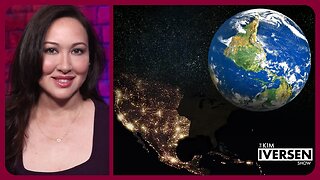 1:18:44
1:18:44
Kim Iversen
2 hours agoMagnetic Pole Shift: Europe’s Blackout Is Just the Beginning | 90° Earth Flip Coming
40.2K25 -
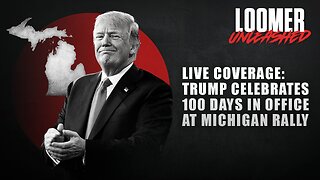 LIVE
LIVE
Laura Loomer
1 hour agoEP118: LIVE COVERAGE: Trump Celebrates 100 Days In Office At Michigan Rally
2,071 watching -
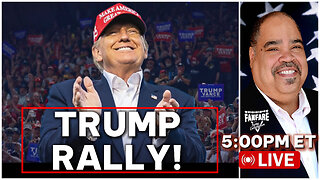 LIVE
LIVE
Barry Cunningham
8 hours agoWATCH TRUMP RALLY LIVE: PRESIDENT TRUMP MARKS 100 DAYS IN OFFICE WITH A RALLY IN MICHIGAN
1,607 watching -
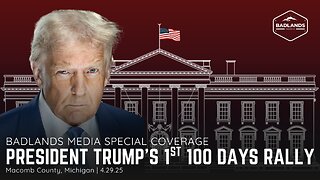 LIVE
LIVE
Badlands Media
8 hours agoBadlands Media Special Coverage: President Trump's 1st 100 Days Rally
1,151 watching -
 LIVE
LIVE
Sarah Westall
1 hour agoA Globalist Agenda or Chinese Payback? Fentanyl #1 Cause of Death for People Under 49
102 watching -
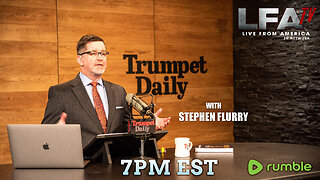 LIVE
LIVE
LFA TV
22 hours ago| TRUMPET DAILY 4.29.25 7PM
109 watching -
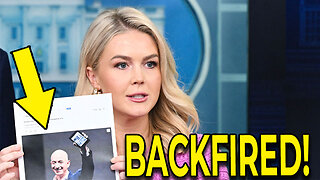 16:12
16:12
T-SPLY
7 hours agoJeff Bezos Is Now Enemy #1 For The Trump Administration
32.3K35